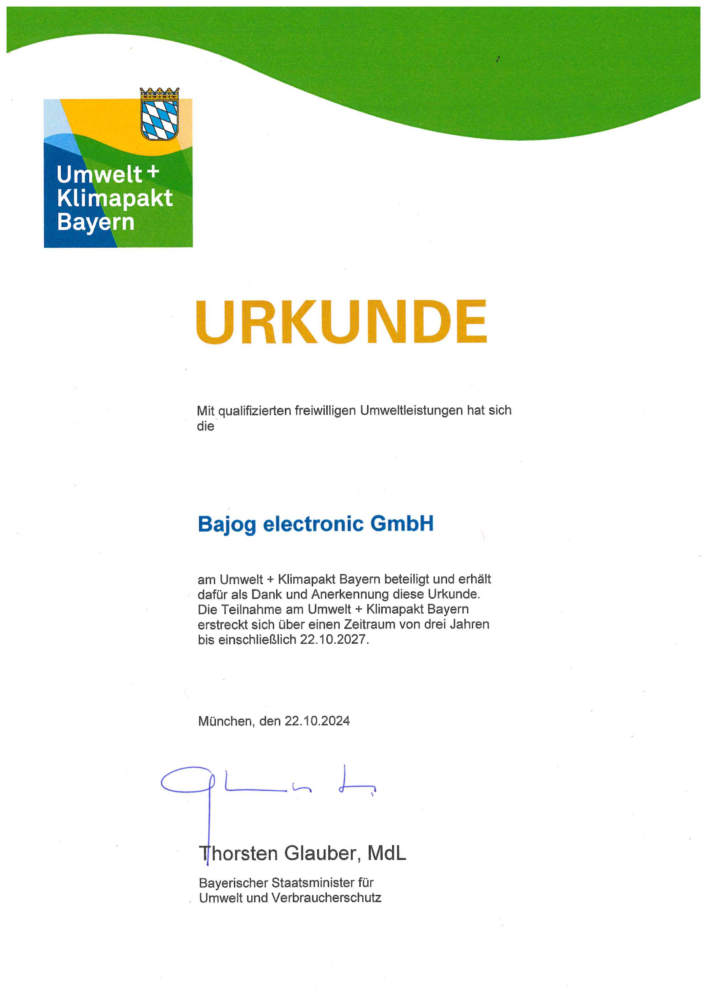
08.04.2024
Self-sufficient energy production without a public supply network
Planned new development areas, primarily in the Lower and Upper Bavaria region for single and multi family homes ( up to 12 appartments) are request of mayors and local councils, to be designed to be energy self-sufficient using the energy concept from Bajog electronic.
The principle:
Every single- and multi-family house connected to the energy center feeds in its PV solar surplus energy centrally.
In the energy center, hydrogen is obtained (electrolyzers) and alternating voltage is generated for the connected households.
The households are supplied centrally via an additional power cable. This means that personal investments in an energy and heating system are no longer necessary.
In addition, there is no longer any need to plan a basement space for an energy system (oil heating, wood chips, pellet heating). Maintenance, repair and chimney sweep costs will also be eliminated in the future.
With an additional air heat pump, an individual room climate (heating/cooling) can be created in each residential unit, or using a 3KW heating element in your own buffer storage, the domestic hot water can be operated, as well as the underfloor heating using a low temperature control.
Of course, you can also charge your own electric vehicle in front of the door or in the garage.In addition, a hydrogen filling station is planned in every new development area, to which every network member has access with a chip card. The charging process takes between 20-45 minutes depending on the battery capacity.
Each member of the energy network can continuously monitor and access their own energy production and consumption status, as well as the central data, via a PC, tablet or iPhone at any time.Conclusion:
The CO2-free electricity obtained can be used individually and does not require any additional effort during the construction project. Another advantage is the stable energy – low cost.
Young families who decide to own their own homes and are also dependent on financing will have it much easier in the future because they will not have to deal with rising energy and other costs investment costs in the independent energy industry.And another advantage:
all connected households are protected from a widespread black out!
The primary energy sources are solar (PV), wind and bio-systems. The daily energy required for individual households is fed directly into the households via suitable inverters.
Excess energy is stored in hydrogen and, if necessary (at night), supplied as DC voltage to the battery buffer via suitable fuel cells, from which the inverters supply alternating voltage to the households.
The lights never go out for us and the connected households in the new development areas!













